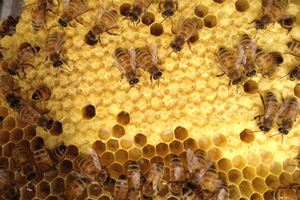- All-In-One Beekeeping for the Bees
- +1-608-728-8233
- info@beepods.com
5 Things You Can Do While Your Bees are Clustering This Winter


Winter is a quiet time of year for beekeepers. While your bees are clustering and keeping themselves warm in their hive, you’re likely spending more time inside, too. You may be missing your bees, but there are some very bee-centric and productive things you can do to pass the time!
The next time you find yourself wishing you were out beekeeping, consider filling your free moments with one of these winter activities for beekeepers.
1. Books
What’s better than curling up inside on a cold winter’s night to read a good book? For beekeepers, winter is prime time to read up on stories and insights from fellow beekeepers, information about bees and pollinators, and to learn more about the fascinating lives of our tiny winged friends.
Are you looking for your next awesome bee-book? We have a helpful list of recommended reading to help get you started. It has books for everyone, ranging from fun reads for the youngest bee-lovers to beekeeping guides and books for people who just adore bees.
2. Recipes
You’re likely to have a nice stash of honey you’ve collected from your hives. Use this time while your bees are clustering to start cooking and trying honey-enhanced recipes!
Whether you’re a pro in the kitchen or just getting started, there are honey-heavy recipes out there for home chefs at every experience level. Here are a few delicious recipes to try!
- Urban Honey Glazed Brussels Sprouts
- Holiday Hot Toddy
- Paleo Cranberry Relish
- Honey Oat Bread
- Honey Pumpkin Pie

Winter is a great time to check your equipment. See if your Veil Jacket and other gear is in good shape.
3. Checking and Cleaning Equipment
Winter is the perfect time to ensure all of your beekeeping gear and equipment are clean and in good shape! That way, once spring arrives, you’re prepared to return to your hives.
Set aside some time to assess how your jacket veil, gloves, or other beekeeping apparel you use are holding up. If any of your regular gear has seen better days, now is a great time to replace it, so you’re ready for spring.
You’ll also want to take a look at your equipment. While our Beepods Hive Tool and Feather Guider are well-made and should last you for many seasons, if you use them frequently, you may want new ones or extras to have on-hand. Make a list of the equipment you count on for inspections and other tasks, and decide if you need to get additional items to prepare for the new season.
4. DIY Projects
Are you a seasoned DIY-er or an aspiring DIY junkie? Either way, these winter months provide an opportunity to try your hand at making your own products. If you’ve been collecting comb and propolis from your bees this year, it’s time to get to work on creating!
You might know that bees’ wax and propolis are lovely ingredients for making various salves, balms, and tinctures. But did you know how easy it is to create those products right on your kitchen counter? Our Balm & Salve Making Start Kit comes with enough ingredients to make ten, two-ounce tins. Once you have your kit, you can watch our simple Balm & Salve Making course in Beepods Lab, where we walk you through concocting your own creations!
Beyond salves and balms, there are a variety of items you can make at home using your bees’ wax. These include candles, soaps, fire starters, shoe and furniture polishes, lubricants, and more. Read more about wax products and how you can start crafting your own from the comfort of your home on our blog.
There are many recipes out there for making home remedies, self-care products, and household essentials using your bee-made ingredients! Beepods has a fantastic e-book, Recipes & Remedies Collection, full of ideas for how you can use bee products.
5. Analyzing Data
If you’ve been dutifully gathering your hive data at inspections throughout the year, you likely have a significant amount of data on your bees’ activity, behaviors, and productivity. Going into a new beekeeping season, use that data to support your bees!

While their bees are clustering, beekeepers can make sure they’re ready for spring inspections with the Beepods Inspection Kit.
Members of Beepods Lab who have been inputting data into our Healthy HiveTM software can log in and review your recorded information. How much honey did your bees make last year? Were there any issues or problems, such as parasites, disease, or irregular comb? What trends or observations can you learn from as you approach beekeeping this spring?
If you’re not yet a Beepods Lab member, you can still handwrite your inspection data next spring with the Beepods Inspection Kit. Its materials will guide you through maintenance and inspections, and it includes sheets for you to track your hive information. Get your kit this winter while your bees are clustering so that you’re ready to start fresh this spring!
Conclusion
Pass the time you’d typically dedicate to beekeeping with one of the activities described here. Whether you decide to take a deep dive with your hive data, finally put that stored comb and propolis to use, or cozy up with a bee-friendly book, you’ll head into spring beekeeping with a new appreciation for your bees!
Kanoe Riedel
Latest posts by Kanoe Riedel (see all)
- This Spring, Don’t Forget Why Bees Are So Important to Our Environment - March 26, 2021
- 11 Awesome Uses for Your Stored Honeycomb - March 2, 2021
- How the Right Beekeeping Equipment Makes Inspections Better for Beekeepers and Bees - February 12, 2021



